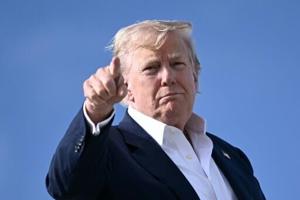President Donald Trump’s aggressive stance on international trade, particularly his push for higher tariffs on imports, has indeed seen some nations acquiesce to his demands. However, despite these significant shifts in immediate trade relations, many experts suggest that the fundamental structure of the global trade system, built on decades of progressive liberalization, remains largely intact for the time being. This strategic imposition of tariffs represents a contentious challenge to the prevailing norms of international commerce and a test of global economic resilience.
Historically, the post-World War II era has been characterized by a concerted movement towards lower trade barriers, a philosophy deeply embedded in institutions designed to foster global economic prosperity. The General Agreement on Tariffs and Trade (GATT), the precursor to the modern World Trade Organization (WTO), was founded on the principle that reduced duties facilitate greater wealth for all participating nations. With 166 members, the WTO currently oversees nearly all global commerce, advocating for policies that encourage free and fair competition across borders, underscoring the benefits of open markets for national prosperity.
Despite this established consensus, Trump has persistently championed a confrontational approach, initiating what he terms a “trade war” based on claims that trade deficits signify other nations are “ripping off” the United States. His repeated assertion that “tariff” is the “most beautiful word in the dictionary” during his 2024 election campaign underscored a strong commitment to protectionist policies. This perspective prioritizes domestic industry over global economic integration, diverging sharply from the multilateral framework that has governed international trade for decades.
The immediate economic implications of these increased US tariffs are varied and complex. While they aim to encourage American consumers to purchase more domestically produced goods, the higher costs associated with imported items may ultimately be passed on to consumers, potentially impacting their purchasing power. For US importers, the decision often comes down to absorbing these additional costs, sourcing from American suppliers, or navigating alternative international supply chains, creating significant adjustments across various sectors of the US economy.
Many international trade policy analysts view Trump’s tariff strategy as having a limited systemic impact beyond the United States. Pascal Lamy, a former WTO chief, characterized these tariffs as a “Pyrrhic victory,” suggesting that the gains, if any, come at a substantial cost. He points out that Trump’s focus solely on goods deficits overlooks the rapidly expanding services sector, which represents a crucial and growing component of global commerce. This narrow focus might undermine the broader goals of a comprehensive and integrated international economic strategy.
Experts like Richard Baldwin from the IMD Business School argue that Trump’s protectionism reflects a “medieval view” of international trade, contrasting sharply with accepted economic wisdom. The prevailing consensus is that raising tariffs does not inherently make a country wealthier; instead, by increasing the cost of goods, such measures tend to depress economic growth for all involved parties. The notion that “putting up your own tariffs is not a way to make yourself richer” has been a long-held understanding in modern economic thought, highlighting a disconnect between current White House policy and established economic principles.
Crucially, the broader World Trade Organization framework and global system have not collapsed under the weight of these new trade barriers because other nations largely maintain their belief in the benefits of open international trade. With US imports accounting for only about 13 percent of total global imports, the vast majority of international commerce remains unaffected by Trump’s levies. This resilience indicates that while specific bilateral trade relationships may be strained, the foundational desire for engagement and interdependence among most countries continues to underpin global economic interactions.
Indeed, while the US pursued its protectionist agenda, other major economic blocs continued to strengthen their trade ties. Japan, South Korea, and China have actively sought to accelerate negotiations on new trade accords, demonstrating a commitment to regional integration. Similarly, Brazil’s President Luiz Inacio Lula da Silva has advocated for a trade deal between the Mercosur Latin America bloc and Japan. These ongoing negotiations underscore the global trend toward liberalized trade agreements, even as the United States adopts a more restrictive approach, signaling continued faith in collaborative international relations for economic growth.
However, the future impact remains uncertain, particularly given Trump’s threats of even more severe tariff levels if countries do not sign new agreements with Washington. While past forecasts for global growth considered the tariffs already announced, the potential implementation of these harsher measures starting August 1 could introduce greater volatility and further test the resilience of the global economic framework. The ultimate economic impact of these escalating trade tensions will depend on the degree of global adherence to or deviation from established free trade principles.






Leave a Reply